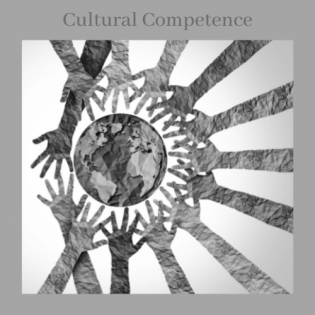Understanding Cultural Competence
The key to cultural competence is learning about cultures around the world. The book Children Like Me sparks curiosity about different cultures. Youth make a simple keychain to represent the different cultures they can learn about with the key that helps them open doors.
- define cultural competence
- describe an example of cultural competence in the community
- read-aloud copy of Children Like Me (1st or 2nd edition) by DK Books
- Plain wooden beads
- Craft paint and brushes
- Split key rings (one per youth)
- 2mm craft cording (leather, elastic, or cotton)
Acquire materials for the craft activity and prepare a place for the beads to dry.
cultural competence: recognizing the qualities of one’s own cultural identity while being open to learning about and aware of the cultures of others
Encourage youth to share with their families what their keychain represents.
Reflect with the group on how they do or don’t see cultural competence present locally (e.g., minority communities treated as outsiders or welcomed, curiosity or suspicion about youth who speak another language).
Children Like Me (1st or 2nd edition). If the book is not available, there is a video with a brief survey of the book (https://www.youtube.com/watch?v=M4JEw3yfVGw). Note: this book is a great one to own, as you can use it to fill in any gaps in time. Kids love exploring the world!
Instructions
Anticipatory Set:
Invite the group to close their eyes and listen to the following:
Imagine you're in a hallway with lots of locked doors. Behind each door is a new culture that you'd like to visit and explore. What do you need in order to enter the locked door? [a key.] Cultural competence is like a key that unlocks the doors to people all over the world. With cultural competence, you can get to know the interesting and wonderful characteristics of unfamiliar cultures. But without cultural competence, you stay in your same familiar hallway.
Note: Competence means you are good at something. Cultural competence means you are aware of and open to learning about other cultures.
Show the group the book, Children Like Me, including the map of the world in the first pages. Explain that with this book, and the “key” of cultural competence, they can travel the world to meet kids from many different cultures.
Looking at the map, ask the group to name a country they’d like to visit. Read from the book about the child from that country, comparing and contrasting pieces of the described culture with your learners’ cultures. Repeat this with 3-4 different children.
Recall the key metaphor about opening doors to understanding other cultures. Explain that they will make a keychain to represent their exploration of world cultures.
Directions:
Paint 3-5 different beads using a variety of colors and designs. Let them dry. Attach a 12" length of cord to a key ring. After the beads dry, thread them on the cord. Tie the cord to hold the beads in place.
Optional: the beads can represent different cultures you learn about.
Giving to your community: Discuss how to offer this “key” to others to encourage them to be culturally curious.
Philanthropy Framework
-
Strand PHIL.II Philanthropy and Civil Society
-
Standard PCS 02. Diverse Cultures
-
Benchmark MS.1 Examine several examples of philanthropic traditions practiced in diverse cultures.
-
Benchmark E.1 Give examples of philanthropic traditions of diverse cultures.
-
-
